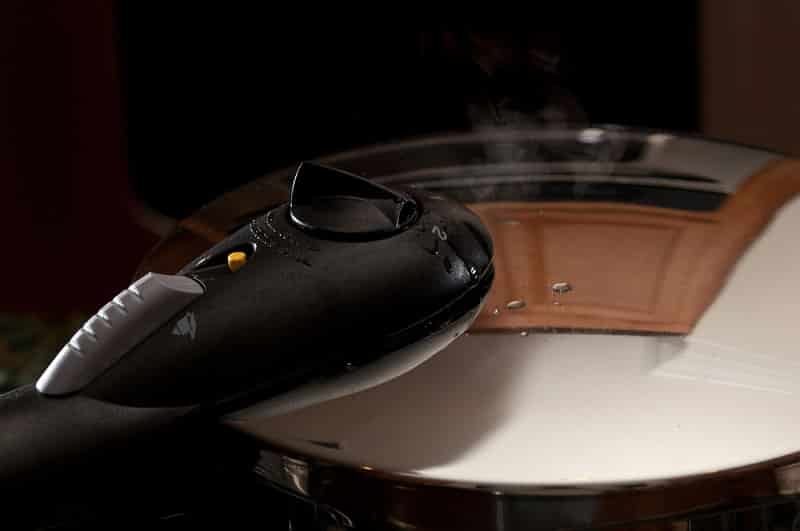
How Does a Pressure Cooker Regulator Work?
The pressure cooker regulator controls the pressure building up inside the pressure cooker. It also enables you to cook at the correct pressure and to prevent excess steam from escaping which could cause the pressure cooker to boil dry.
The pressure cooker valve is crucial for safety and it helps you to regulate and understand the cooking time, simply by looking at it.
The pressure cooker regulator fits on the vent pipe. Once the pressure cooker begins to heat and build up pressure, the regulator begins to rock slowly indicating that it is building up a steady pressure. This type of pressure cooker is sometimes called a Jiggle Top for this reason.
An electric pressure cooker, by contrast, has markings on the valve that indicates the pressure, showing you when the pressure is rising and is a more sophisticated version of the same thing; with an electric pressure cooker, the regulator works in the same way as a Jiggle Top but the only difference is that you just can’t see it.
With all pressure cookers, the ideal cooking pressure is 15lbs but it is important to read your manufacturer’s guidelines in order to understand best how to use your particular model.
If you have a stovetop pressure cooker with a visible jiggle top regulator, you can adjust the heat by looking at this – if the regulator starts rocking too much, reduce the heat so that it returns to a safe rocking motion. Once the pressure cooker regulator starts to move or the pressure indicator starts rising, you know that the pressure cooker is now cooking.
If you are using the electric version, you need to follow the instructions and recipe in order to maintain the correct pressure.
Once you have finished cooking, your pressure cooker regulator will tell you when it is safe to unseal the unit and open the lid.
Some recipes call for a slow release of pressure, where you remove the pan from the heat and leave the pressure cooker to cool down naturally. This takes around 15 minutes and if you tap your regulator you will be able to see that all the steam has dissipated and that it is safe to open the lid.
For fast release with stovetop pressure cookers, you simply run it under cold water. An electric pressure cooker has a quick release valve which does the same thing.
The pressure cooker regulator is weighted and with some models, you can adjust the weights and alter cooking time. The higher the pressure and the heavier the weight, the faster your food will cook. However, it is important to always keep to the manufacturer’s instructions and your recipe in order to achieve the best results.